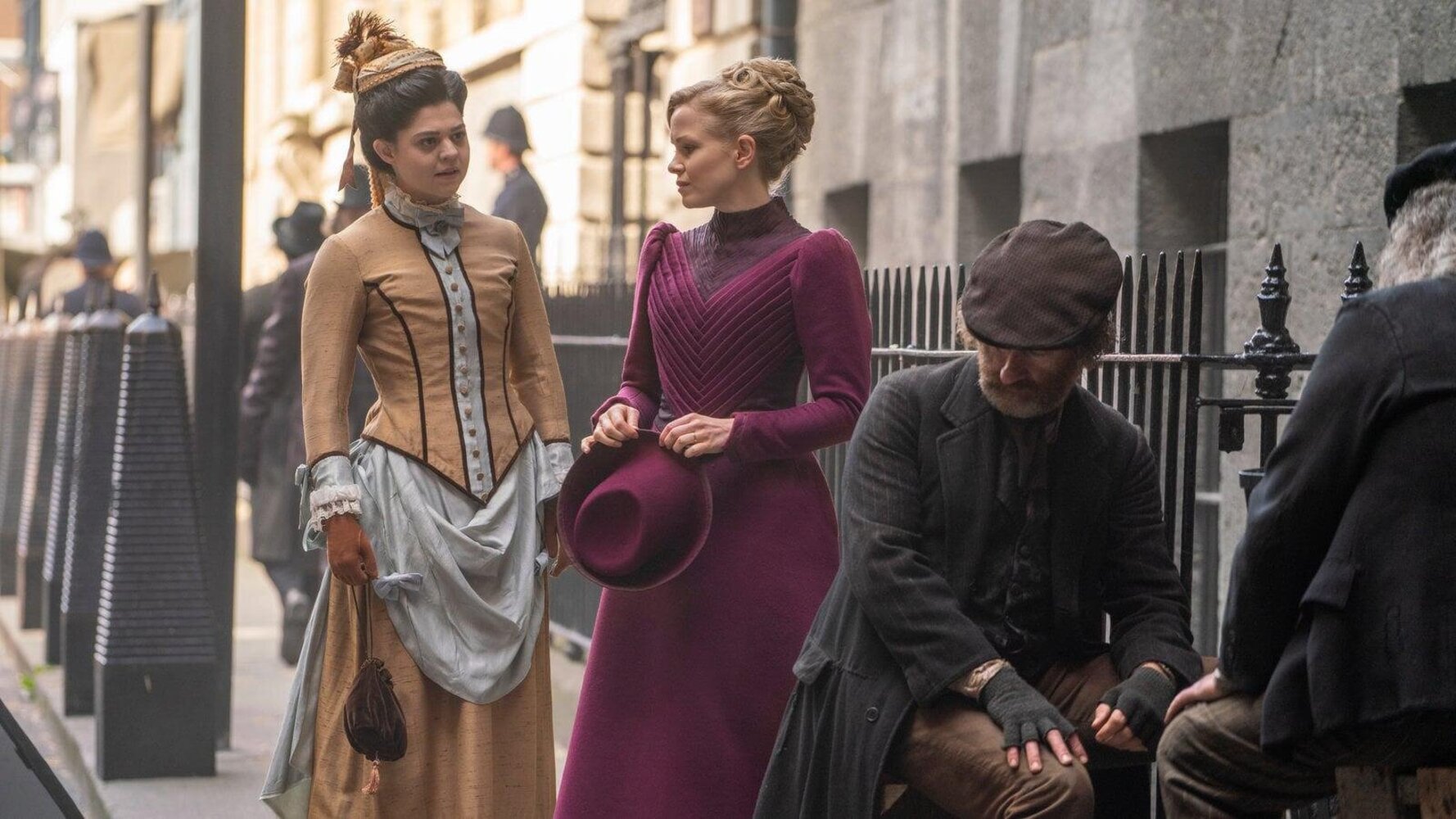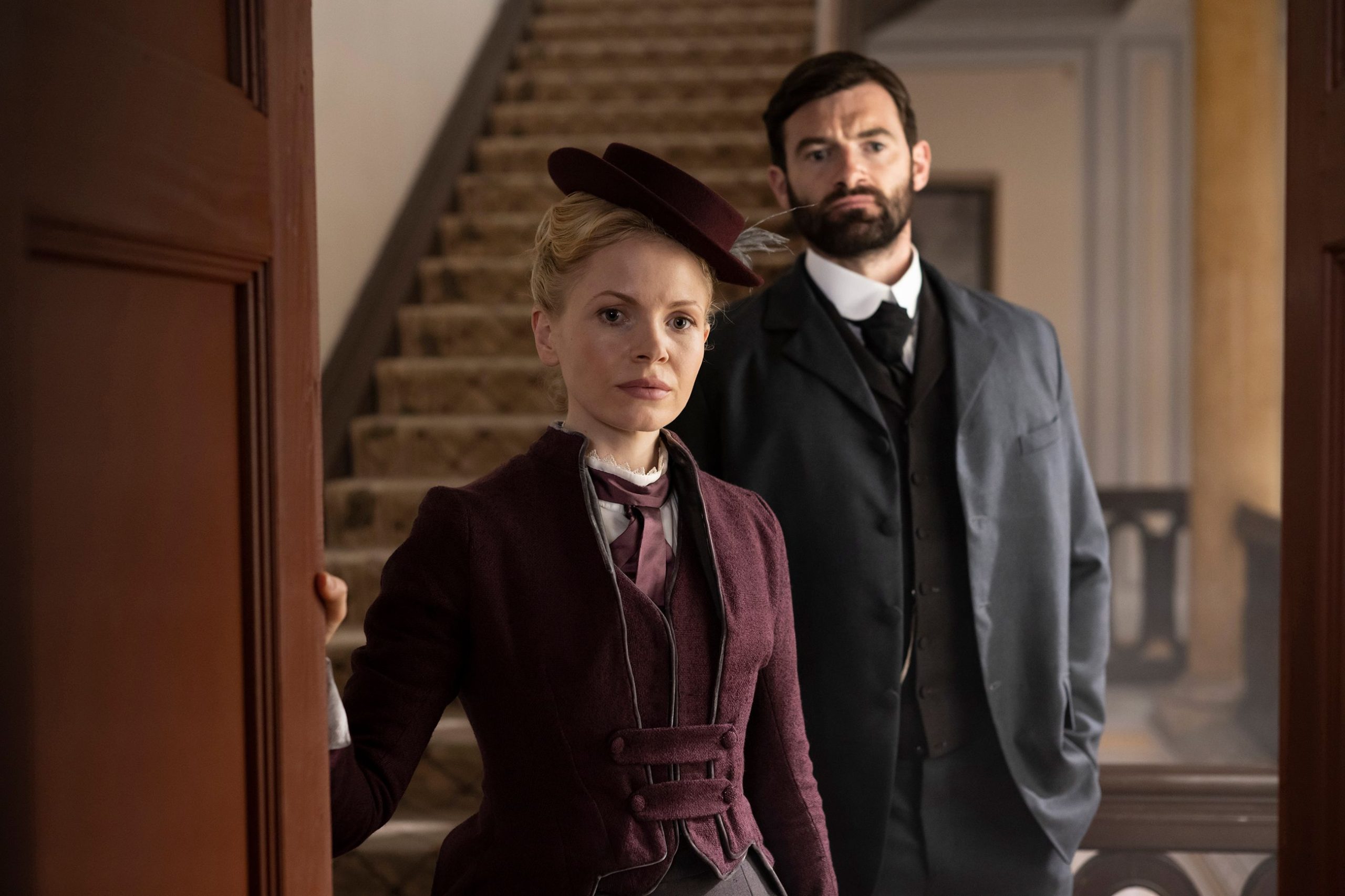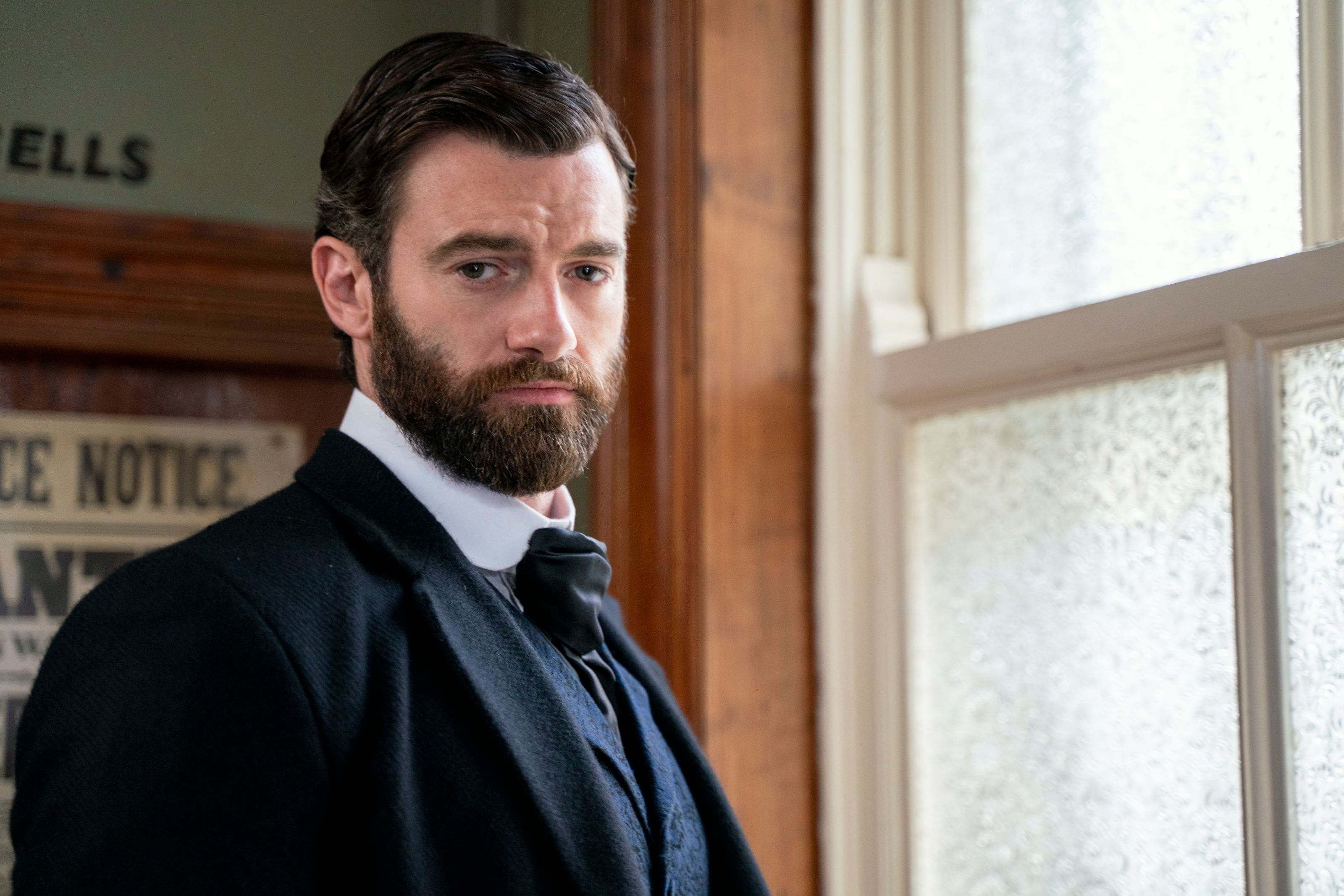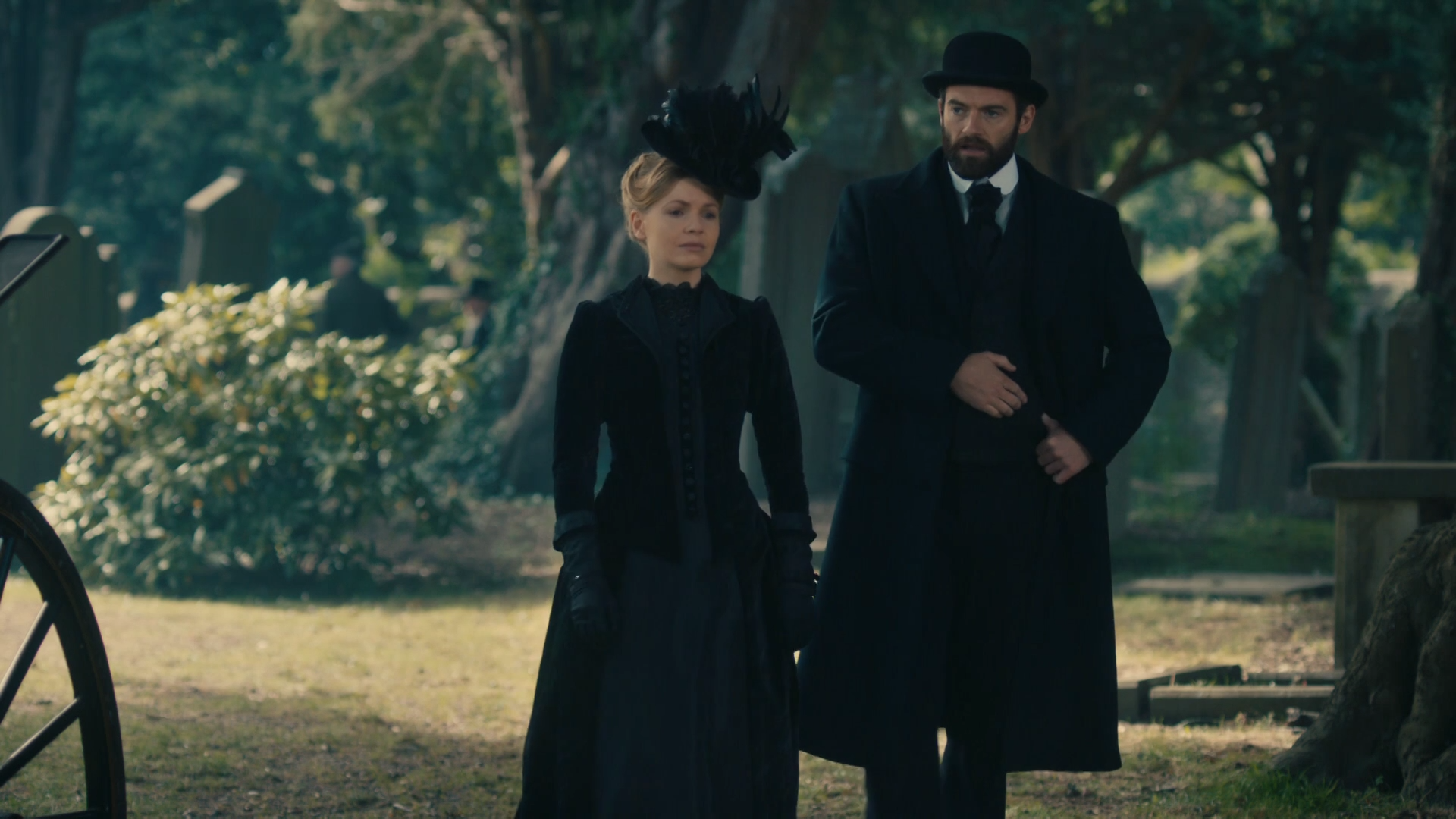Table of Contents Show
How does a period piece created in the modern era stick to its historical roots while appealing to the 21st-century masses? It’s a question that has been widely discussed and debated among fandom circles and one that creator Rachael New set out to address with her Masterpiece PBS series, Miss Scarlet and the Duke (2020-), returning for a second season in 2022.
The way historical fiction shows like Bridgerton (2020- ) depict the realities of being a woman or person of color in the past can be controversial. Today’s viewers are interested in seeing period pieces that tell new stories with diverse characters. At the same time, history was by and large not a great time to be a woman, a person of color, or anyone but a rich white man. How does one create a historical television show that feels interesting and inclusive while also building realistic characters and not glossing over the truth of the past?
It’s a bit of a balancing act and one that New navigates with finesse in Miss Scarlet and the Duke. In an interview with PBS, New described her goal to create a series that keeps “that historical context, but with that little modern flavor and fun.” (( “Interview: Miss Scarlet and The Duke’s Creator Rachael New.” PBS.org, 2021. Accessed 16 September 2021. )) So far, her Victorian-set case-of-the-week series has lived up to that goal with its irresistible balance of corsets and crime-solving, witty dialogue, and high stakes.

Miss Scarlet and the Duke. 2020-present. Masterpiece PBS.
Following a young woman who seeks to take over her father’s private detective agency after his untimely demise, the show succeeds because, as New describes, it follows characters who are all outsiders in their world. With mystery, hijinks, and heartbreak, Miss Scarlet and the Duke explores how the main characters navigate their world while maintaining its clever touch. The result is a product that is both charming and compelling.
A Woman In A White Man’s World
Every period drama fan probably enjoys those guilty pleasure shows about pampered royals or rich people in velvet doublets and floor-length gowns. It’s always nice to indulge in a little escapist television, to step into a world so different from your own, and to see luxuries that most people will never encounter. But the reality is that many people in history weren’t concerned with finding a marriage to elevate their social standing or producing an heir to inherit their vast wealth. More often, people had different problems to deal with, such as how to make a living, afford to feed their family, or be taken seriously in a world that discriminates against them. Those are the characters that viewers can often relate to better.

It’s hard not to feel captivated by Miss Scarlet and the Duke‘s title heroine. Described by New as a mix between “Jane Austen’s Lizzie Bennet and Margaret Mitchell’s Scarlett O’Hara,” (( “Exclusive Interview: Rachael New, Series Creator of Miss Scarlet & The Duke.” Nicegirlstv.com, 2021. Accessed 16 September 2021. )) Eliza Scarlet is plucky, headstrong, and determined to prove herself as an investigator even if the world doesn’t want to take her gender seriously. The Victorian era had a seemingly contradictory view on sex. Though Queen Victoria was a female ruler and one of the most iconic and successful monarchs Britain has ever had, gender standards of the day expected women to take on a subservient role. Even Queen Victoria herself, arguably the world’s most powerful woman, didn’t think that women should vote.
And it was a time when, most certainly, women didn’t work outside the home. If they did, they were nurses, governesses, or held other careers that were considered appropriately “feminine.” So, when Miss Scarlet decides she will take over her late father’s detective agency, it’s difficult for her to get her business off the ground when many potential clients immediately discount her with one look. Regardless, she perseveres with the help of her intelligence and quick wit, and she rarely takes no for an answer. The latter quality continually frustrates her longtime acquaintance, Inspector William “the Duke” Wellington.
He’s not an actual duke — “the Duke” is a nickname coined by William’s colleagues at the famed Scotland Yard police force, a nod to the famous war hero the Duke of Wellington. The two are longtime friends who frequently butt heads due to their mutual stubbornness and differing viewpoints. Eliza also frequently makes her friend’s life more difficult by pulling stunts like stealing case files from his desk and pretending to be his wife to gain access to the morgue. Creator Rachael New has described William’s character as “a little bit more Knightley [from Jane Austen’s Emma] than Darcy [from Pride and Prejudice]”(( “Interview: Miss Scarlet and The Duke’s Creator Rachael New.” PBS.org, 2021. Accessed 16 September 2021. )) and says she took inspiration from everything she likes in a man and everything that drives her crazy in one.

While she’s more modern and he’s more traditional, in their ongoing battle of wills, they’re evenly matched, and their snappy dialogue simmers with underlying flirtation that will be further explored in a will-they-or-won’t-they plotline. (He kissed her once when they were teenagers and received a slap in the face in return.) Though the characters frustrate each other endlessly, their interactions feel very much grounded in reality. In one conversation, they can seamlessly cover a multitude of topics, and despite the push-and-pull of their constant bickering, their unspoken affection for each other rings loud and clear.
Eliza’s memories of her dearly departed father are also a major source of strength from her as she navigates these uncertain waters, with few opportunities to support herself. The late Henry Scarlet often speaks to his daughter as a sort of vivid hallucination, reflective of how people we love still stick with us after they’re gone. And, as it turns out, Eliza’s father’s death may not have been the tragic accident it originally appeared to be, giving her one more mystery to solve.
It takes creative thinking and a strong will to survive in a world controlled by powerful men. New’s goal with creating the series was to provide her audiences with opportunities to reflect on historical hardship while also creating a viewing experience with likable characters and quirky obstacles. New says: “This is a show about a woman trying to stay in the game of a man’s world. And it really was a man’s world, a white man’s world. In order for me to really hit that with Eliza, it demonstrated it perfectly to have these two other men in her life that also had their own struggles.” (( “Interview: Miss Scarlet and The Duke’s Creator Rachael New.” PBS.org, 2021. Accessed 16 September 2021. ))
Historical Inspiration, Modern Sensibility
One of the main reasons Miss Scarlet and the Duke appeals to viewers is that the core characters are all, to varying degrees, Victorian social outcasts. Eliza’s closest partners in her business venture include a closeted gay man and a Black man, who prove to be allies in her quest. Considering how period pieces can often be white-centric and heteronormative, it’s refreshing to see other stories and their growing bonds feel touchingly realistic.

And, says New, even William faces his certain degrees of unfair obstacles. She hopes to explore the character’s background growing up in a Glasgow poorhouse in season two. What was a poorhouse, also known as a workhouse in England and Ireland? These systems exploited society’s impoverished men, women, and children for labor, forcing them to complete laborious tasks in exchange for cramped living quarters and meager portions of food akin to a “slow starvation diet.” (( “Conditions in the Workhouse.” Historyhome.co.uk, 2016. Accessed 16 September 2021. )).
The groups were separated, so even children with living parents never got to see them. Talking between residents was frequently forbidden, and they had no access to toys, books, or games, so even during their limited free time, the children would often have to sit silently and alone. Punishments for breaking the workhouse’s strict rules included being withheld food, whipped, placed in solitary confinement, or even sent to prison for hard labor. (( “Rules and Punishments.” Workhouses.org.uk, 2021. Accessed 16 September 2021. )) It was, to put it mildly, no way to grow up.

And though Eliza’s late father, Henry Scarlet, took William under his wing as a mentor, the character is still held back by the elitism of his boss at Scotland Yard as wealthier but less qualified men receive promotions over him. Eliza doesn’t miss an opportunity to point out the irony to him when arguing about a woman’s position in the workplace, with an eye roll and sarcastic quip about how difficult it must be to face discrimination due to factors outside your control. Though the two characters often disagree, at their core, they’re not that different, and they’re bound by mutual respect and loyalty, even if they won’t always admit it out loud.
And while viewers may not live in the 1880s, the main characters’ struggles are easily relatable because most people know what it feels like to be unfairly judged. Season one also explores the realities faced by people of color and the LGBT+ community in this era, such as the secret ways queer men were able to communicate and connect despite the rampant homophobia of their time. How is it that these people can find little scraps of happiness and build a somewhat fulfilling life? These questions are not only relevant to people in the past but the present as well. Viewers can sympathize because they might also understand what it feels like to be yourself in a world that tries to change you. It’s what makes them ultimately so invested in the characters’ successes.
Memento Mori
The Victorian era was not entirely Dickensian doom and gloom. The Victorians were a weird bunch, something that Miss Scarlet and the Duke is willing to embrace. When you picture the Victorians, you might think of their conservative social values or many layers of petticoats, but the Victorian era also had a strange fascination with the macabre. Common pastimes included typical activities like dinner parties and dice games, as well as picnicking at cemeteries or trying to catch a glimpse of the latest murder victim at the morgue. (Yes, really.)

Miss Scarlet and the Duke maintains its careful balance between historical realism and entertaining television by exploring some of the Victorian era’s many quirks. One episode in the first season delves into Victorians’ obsession with the afterlife through the very real practice of Victorian death photography. Families would have the corpses of their dead relatives posed for commemorative photos. A touching tribute, insanely creepy, or both? You be the judge.
Just like modern-day people are fascinated by true crime podcasts or potential paranormal events, Victorians loved to follow the latest grisly news through sensationalist newspapers or attempt at contacting the dead through seances. Miss Scarlet and the Duke provides a fresh twist on the case-of-the-week format often seen in crime shows by tying in Eliza’s latest mysteries to real Victorian events, from women’s suffrage groups to spiritualism obsessions.
Truthfully, history doesn’t need to be serious all the time, and that’s something the writers of Miss Scarlet and the Duke understand as they give viewers a new perspective on Victorian daily challenges and entertaining escapades. People throughout the centuries have always had their weird interests. It’s people’s passions, opinions, and flaws that make them human — and oh so fascinating to get to know.
Give The People What They Want
Ultimately, Miss Scarlet and the Duke works so well because whether a show takes place in 1881 or 2021, viewers connect best with a human story that’s honest and heartfelt. Series creator Rachael New crafts a relatable, enjoyable story that is, at its core, timeless. Miss Scarlet and the Duke sticks true to the historical reality while also hitting on universal experience and emotions to which a modern audience can relate. Many viewers know what it feels like to lose someone they love, struggle to reconcile their romantic feelings or carve their own place in a world that doesn’t always treat them fairly. These are human experiences that cross the ages.

It’s challenging to strike a chord with modern audiences while also not glamorizing the historical reality, but New finds that connective tissue between past and present by creating complex characters that maintain both that historical touch and modern relevancy, because modern audiences, too, know what it feels like to go through their struggles. Creating nuanced characters with nuanced storylines is a writing tactic that generates audience investment and keeps them coming back for more. Perhaps New herself said it best: “[The fans] invested in our core cast of characters which, as a writer, is all you want. That’s all you can ask of people.” (( “Interview: Miss Scarlet and The Duke’s Creator Rachael New.” PBS.org, 2021. Accessed 16 September 2021. )).
